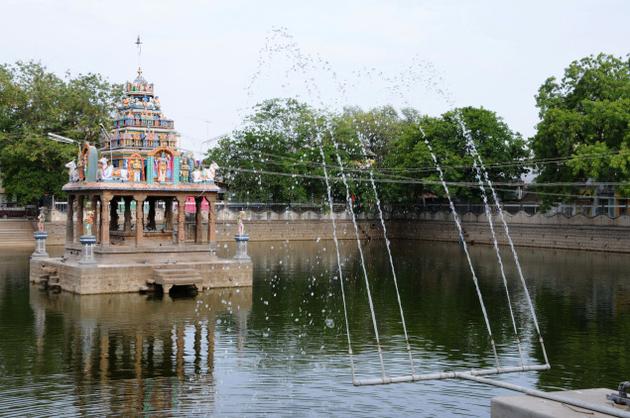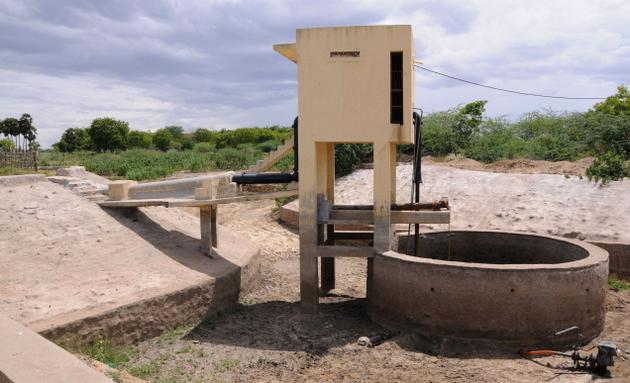Nearly 12 years have passed, and it stands as a classic example

Nearly 12 long years have passed, and the rainwater harvesting (RWH) system in Mariamman Teppakulam here stands as a classic example of how community involvement could bring about phenomenal changes.
Dubbed as the first project to have the biggest network of rooftop RWH structure in the State – set up in 2002– the temple tank in an arid town has descent storage of water even now when other parts of the district are reeling under water crisis.
The municipality along with Virudhunagar RWH Association and Hindu Nadar Palasarakku Mahamai began to connect the rooftops of buildings around the tank in early 2002. Water collected from the rooftops was made to drain in the tank through a network of pipelines.
“Every time, we completed a big portion of the network, we received rain within a couple of days. The raising water level in the tank encouraged more people to join us voluntarily,” said former municipal vice-chairman and Virudhunagar RWH Association joint secretary S. Balakrishnasamy.
Over 50,000 square feet of rooftops were brought under the RWH network.
Besides, the local people took up repairing a channel that supplied surplus water from the Kowshika river from where water was pumped to the tank with underground pipelines laid for more than three km. All that the then Collector K. Gopal did was facilitating the work by coordinating with all the government departments, he said.
Earlier, the tank was rendered dry for good parts of the year after fast urbanisation changed the course of rainwater that used to feed the 324 feet by 294 feet tank.
“When sewage water started mixing with the rainwater in the river, the Mahamai went a step forward and bought over four acres of land upstream to create a new water storage point,” former secretary of the Mahamai P.M.S.N.K.D. Rajavel said.
A leading channel was dug up to bring rainwater from Kowshika river into a small waterbody. An infiltration well was dug up in it from where water was pumped to the tank some five km away.
“The municipality takes care of the electricity bill for pumping water. We have erected a 40-KVA generator to keep the 25-Horse Power motor pump on as and when required,” Mr. Rajavel said.
The Mahamai has created a corpus fund of Rs.40 lakh for the RWH system. It spends around Rs.5 lakh on its maintenance and operation. Water from here and the rooftops fills up not only the tank, but also eight wells in the area.
Dedicated pipeline with a valve control has been provided allowing overflowing water from the tank to fill up the wells. “Almost the entire southern parts of the town are water- sufficient,” Mr. Rajavel said.

Water stored in the storage point as a result of one hour rain in three spells last year was good enough to draw a huge quantity of water which was at least two times the capacity of the tank.
Mr. Balakrishnasamy said most of the 3,000-odd borewells in the town continued to provide sufficient water for the residents. The municipality has also created smaller rooftop RWH structures in 10 places that help in rejuvenation of groundwater in different residential areas across the town.
source: http://www.thehindu.com / The Hindu / Home> News> Cities> Madurai / by S. Sundar / Virudhunagar – July 18th, 2014